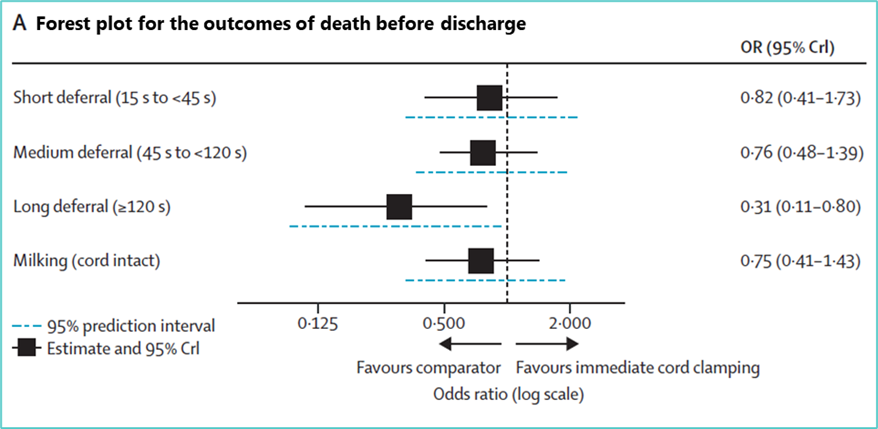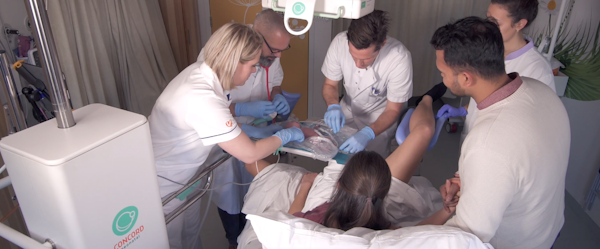Share this article on:
iCOMP confirms: Waiting with cord clamping saves preterm infants’ lives
Today an impactful study was published in The Lancet, confirming that waiting with clamping the umbilical cord for longer periods (>2 minutes until after the lungs are aerated) is likely to lead to a large reduction in death in preterm infants. For infants who require resuscitation, this finding is only generalizable if adequate resources and equipment are available to effectively aerate and ventilate the infant’s lungs, prior to clamping the cord. These results are expected to lead to a global clinical practice and guideline update.
This is concluded by the iCOMP collaboration after comparing individual patient data from 6094 preterm infants out of 47 randomized trials. The iCOMP collaboration brings together researchers and experts from all over the world, to determine the optimal umbilical cord management strategy at preterm birth. The study that was published today, is the first individual participant data network meta-analysis comparing different timings of delayed cord clamping on mortality and key secondary outcomes.
Until today, meta-analyses concluded that there was insufficient evidence to determine the best timing of clamping the cord. With this study from iCOMP, researchers found that waiting at least 120 seconds before clamping the umbilical cord, led to a large reduction in death, compared with immediate cord clamping. They found a 91% probability that this is the best treatment to prevent death for preterm infants. The reduction in mortality increased with length of delay. This result appears to be consistent across subgroups and suggests that preterm infants of all gestational ages, benefit from continued umbilical flow at birth.

For preterm infants, the transition from fetal to neonatal respiration might take longer than term infants. Compared with early clamping, delaying cord clamping might allow more time for the newborn’s lungs to aerate and thus provide a smoother transition to neonatal respiration. The iCOMP study findings suggest, that resuscitation with the cord intact might be beneficial. During longer delayed cord clamping, infants should crucially receive the necessary interventions to effectively aerate and ventilate their lungs prior to cord clamping.
This study also shows that there is no longer equipoise for immediate cord clamping, given that ICC had a high probability of being ranked worst for the primary outcome of death before discharge and also for the key secondary outcome of receiving any blood transfusion.
A growing community of 60 hospitals in 12 countries already made the choice to move care for preterm infants to the mother’s bedside, providing high-quality care prior to clamping the cord, facilitated by the Concord Birth Trolley. With this publication, we are even more convinced that having the best possible support close to mother in the first minutes of life is a birth right for every baby.
Let's get birth right!
Publication reference: Seidler et al. Short, medium, and long deferral of umbilical cord clamping compared with umbilical cord milking and immediate clamping at preterm birth: a systematic review and network meta-analysis with individual participant data. The Lancet. November 14, 2023. DOI:10.1016/S0140-6736(23)02469-8.
Link to the publication.
